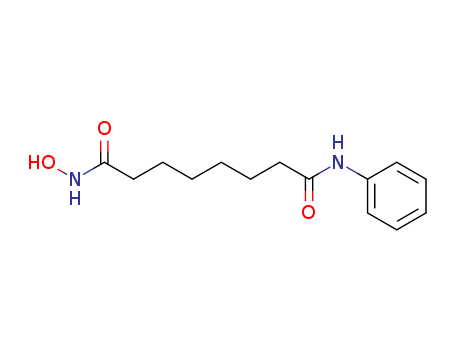10.1016/j.bmcl.2019.06.059
The study focuses on the discovery and synthesis of novel 9H-purin derivatives as dual inhibitors of histone deacetylase 1 (HDAC1) and cyclin-dependent kinase 2 (CDK2), aiming to enhance cancer treatment efficacy. The researchers designed a series of purin derivatives that incorporate pharmacophore groups from both HDAC and CDK inhibitors. Among these, the lead compound 6d demonstrated significant inhibitory activity against HDAC1 (IC50 = 5.8 nM) and CDK2 (IC50 = 56 nM), showing promising anti-proliferative effects on various cancer cell lines, particularly HepG2. The study highlights the potential of these dual inhibitors to improve therapeutic strategies for malignancies by targeting both HDACs and CDKs simultaneously.
10.1016/j.bmcl.2012.09.093
The research discusses the structural requirements of histone deacetylase (HDAC) inhibitors, specifically focusing on the modification of Suberoylanilide hydroxamic acid (SAHA, Vorinostat) at the C6 position to study its impact on potency and selectivity. The purpose of this study was to understand how changes at the C6 position of SAHA affect its ability to inhibit HDAC proteins, which are over-expressed in many cancers and thus potential targets for anti-cancer drugs. The researchers synthesized and evaluated SAHA analogs with various hydrophobic substituents at the C6 position, including methyl, phenyl, t-butyl, and 2-ethylhexyl groups. Their conclusions were that most C6-SAHA analogs maintained nanomolar potency, and that substituents at the C6 position could modestly influence selectivity for individual HDAC isoforms, suggesting that the linker region near the capping group is a promising area for future drug design. The chemicals used in the synthesis process included e-caprolactone, benzyl dimethyl phosphonoacetate, copper (I) iodide, methyl lithium, aniline, and various other reagents for the Horner–Wadsworth–Emmons reaction, oxidation, and hydrogenolysis steps.




